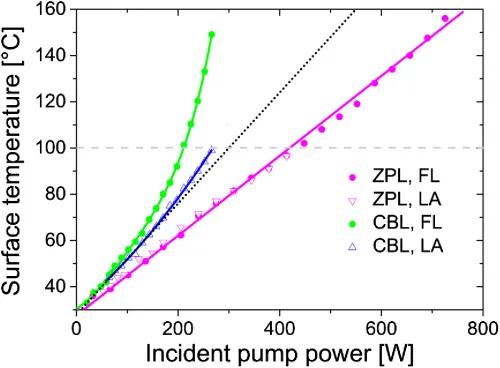High average power diode pumped solid state lasers development stimulates effort to increase its efficiency and lower energy losses. Thermal losses in an active media of a laser lead, for example, to degradation of the laser beam profile, and limit achievable average output power and laser efficiency. Nonlinear phonon relaxation in an Yb:YAG single crystal, which is usually pumped near the wavelength of 940 nm, causes a nonlinear increase in temperature of this crystal. A quantitative comparison of conventional absorption line (940 nm) pumping and zero phonon line (ZPL) (969 nm) pumping of an Yb:YAG thin disk laser is reported. Characteristics of an output beam profile, surface temperature, and deformation of a thin disk under the different pump wavelengths are evaluated. We found that a nonlinear phonon relaxation (NPR) of the excited state in Yb:YAG, which induces nonlinear temperature rise and large aspheric deformation, did not appear in the case of a ZPL pumped Yb:YAG thin disk. This means that the advantage of ZPL pumping is not only the reduction of quantum defect but also the suppression of NPR. The latter effect is more important for high power lasers.
